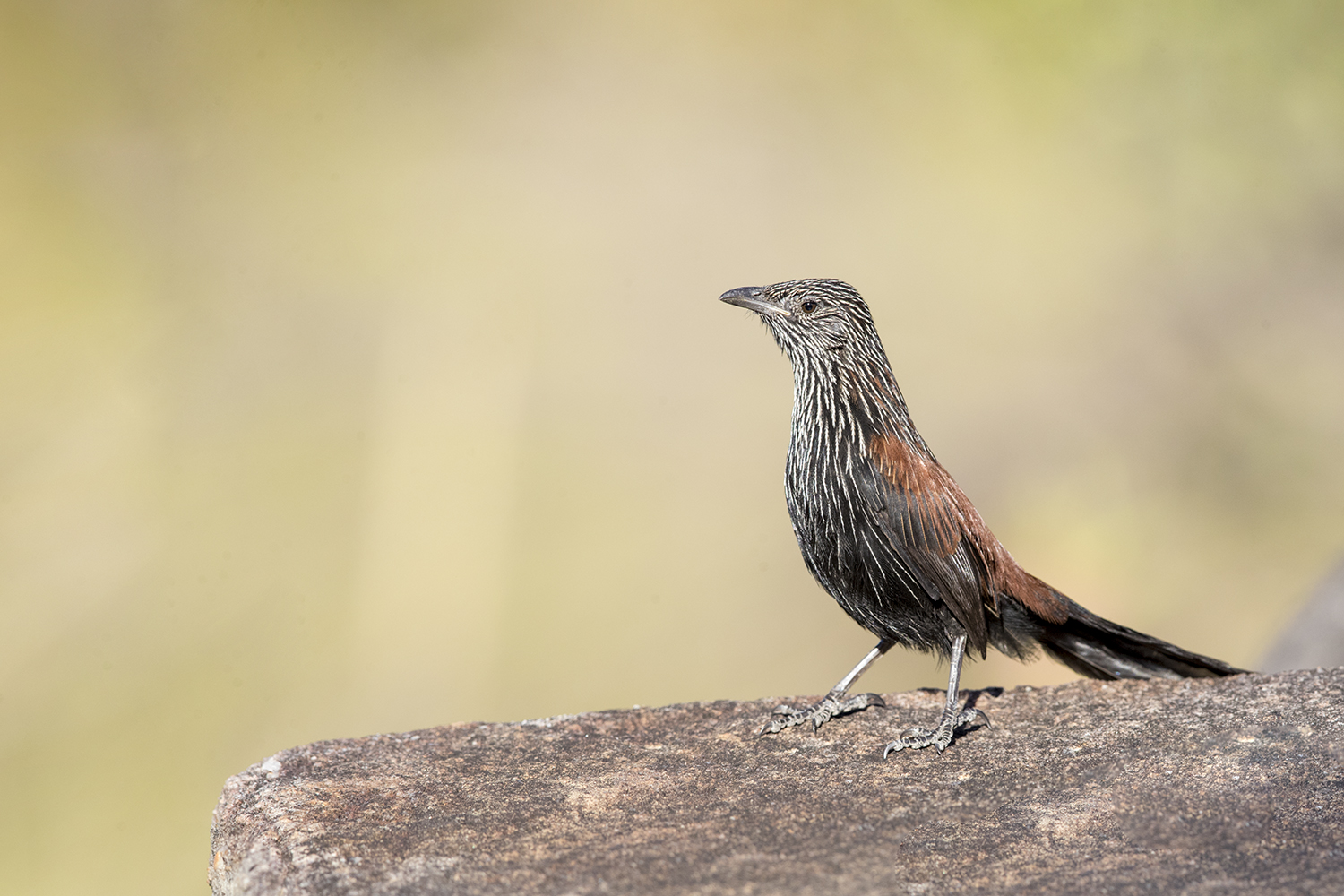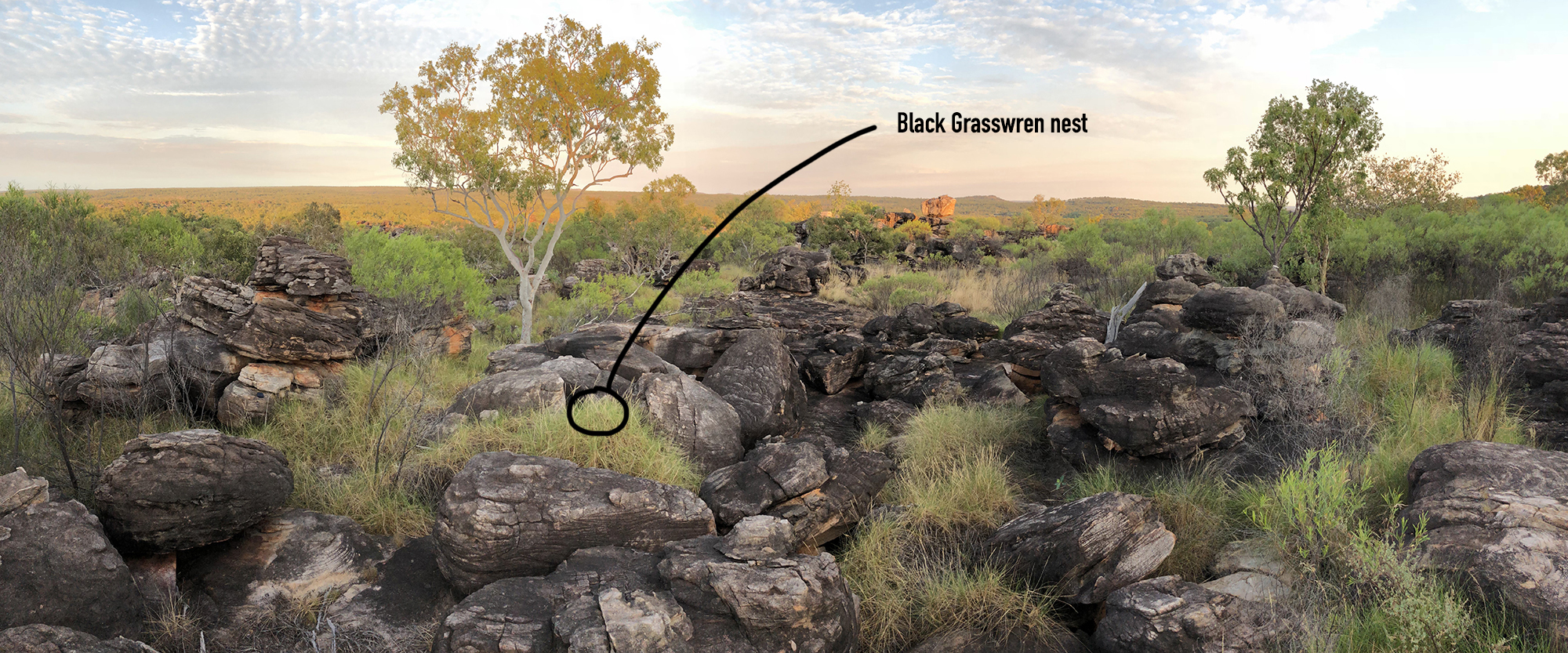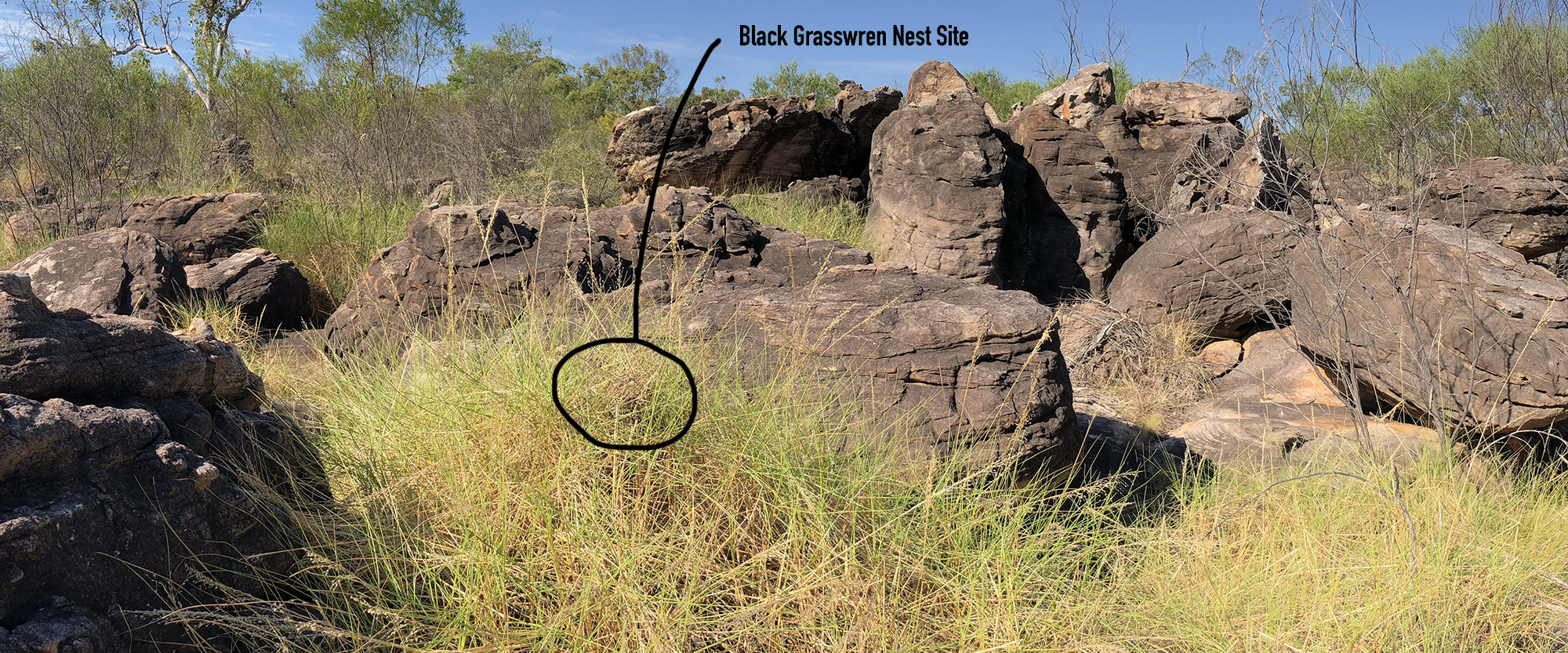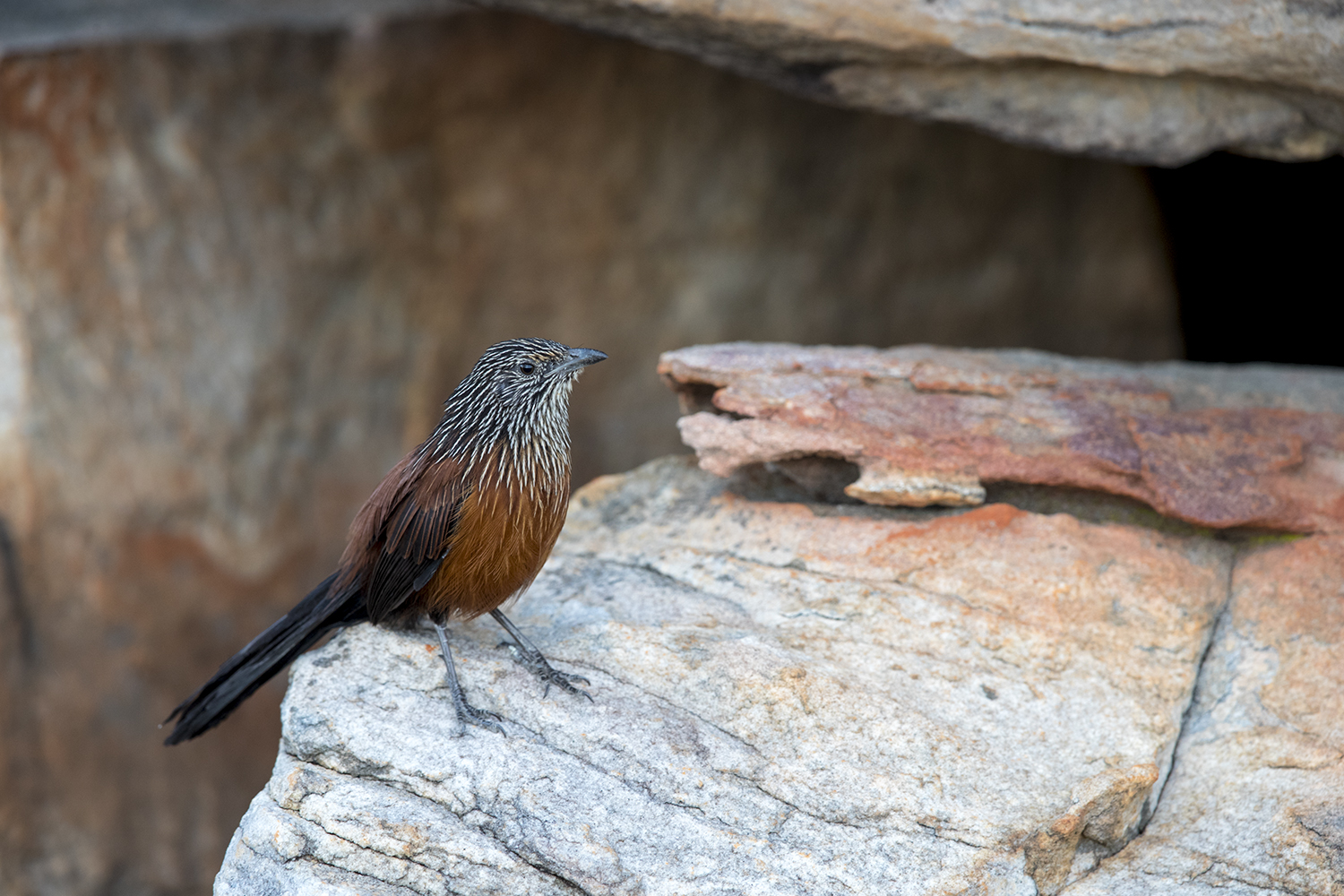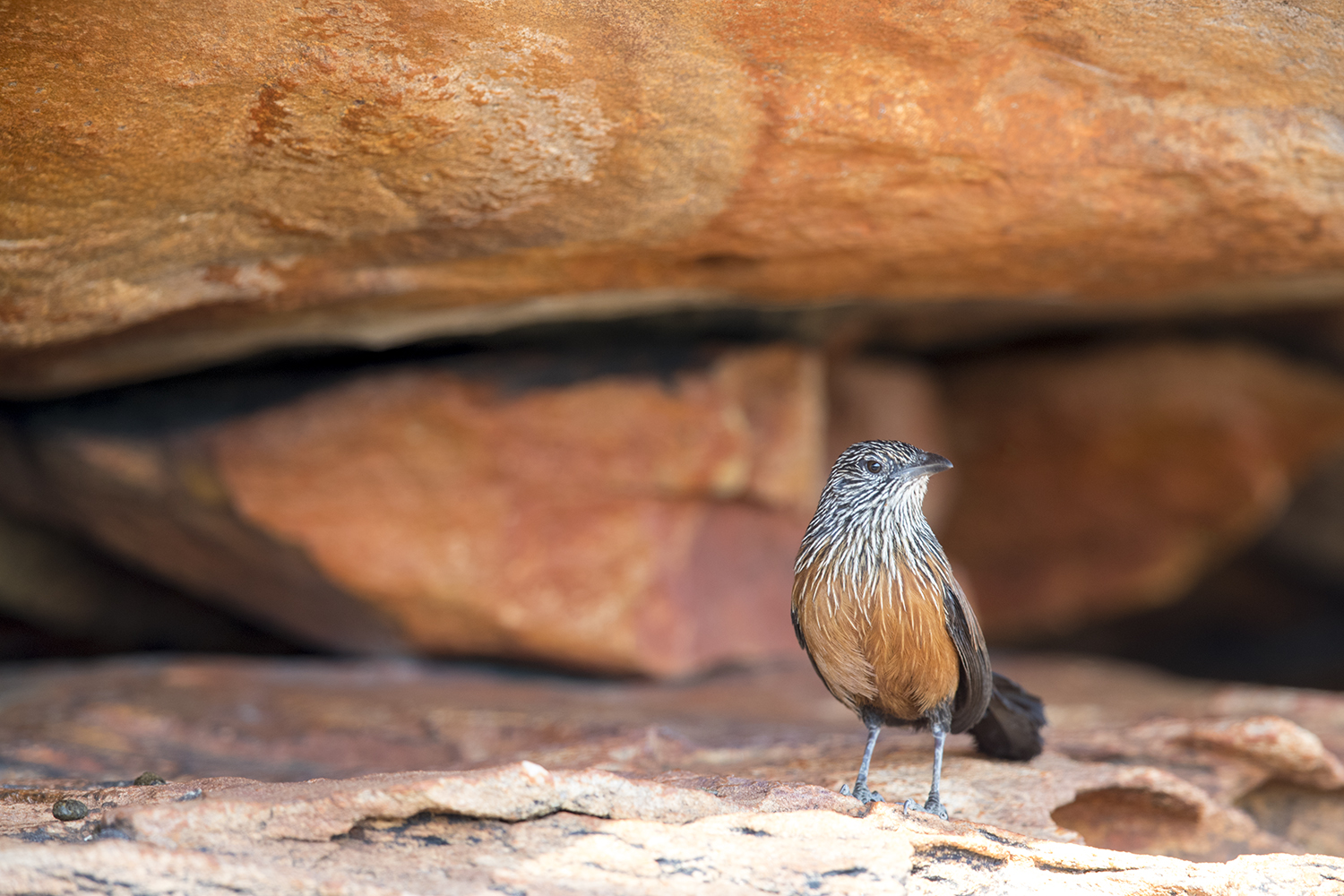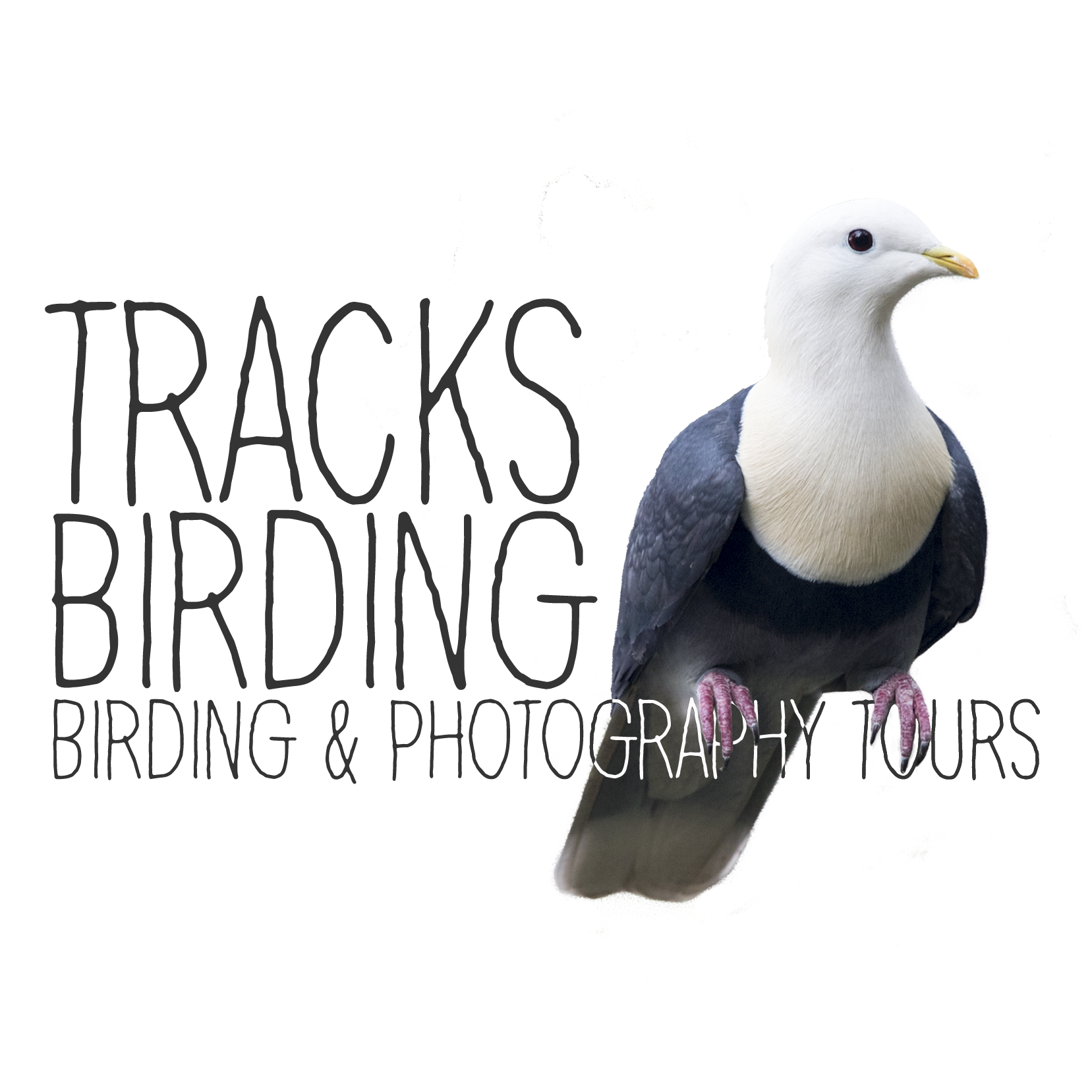BLACK GRASSWREN NEST OBSERVATIONS - MAY 2018
A last minute trip from Darwin to Mitchell Falls in the Kimberley's yielded what has to be the highlight of my birding and photography career, finding a pair of Black Grasswren with two full grown juveniles (1 x Male & 1 x Female) and at the same time feeding young in a nest. Here is all the info I gathered during my two visits to the area including all of my photos and videos.
Black Grasswren Nest Site - May 2018
BLACK GRASSWREN NEST SITE - May 2018
I travelled to Mitchell Plateau, Western Australia in May 2018 on a whim after a recent report of Black Grasswren. There had been a large controlled burn in the area last year and I was worried this may have destroyed their habitat, I was trilled to hear they were still around so I decided to make the 1400km journey from Darwin to see them. I left home at 2.30am arriving at the Mitchell Falls Camp Ground at 5.15pm WA time, right on sunset. It was a long exhausting drive, I hoped it wasn’t all for nothing.
The next morning I got up at 5am and headed straight to where I’d seen Black Grasswren 3 years prior near Little Mertens Falls, to my great relief spotted a lone male almost straight away. In typical Grasswren style he was on edge and not interested in having his photo taken so I decided to head south, off trail, away from bus loads of tourists, somewhere new. After wandering for about 45 minutes I found a pair of Kimberly Honeyeaters, another beautiful local endemic. After taking photos of the honeyeaters for 5 minutes a pair of Black Grasswrens appeared out of nowhere 5 metres away, they seemed very interested in what I was doing an unfazed by my presence.
For next 2 hours I easily photographed both male and female as they foraged and interacted with each other amongst the boulders and spinefex. It wasn’t until I returned to camp later that morning that I realised I was actually taking photos of 4 individuals, 2 adults and 2 full grown juveniles. To say I was ecstatic would be a understatement, little did I know at this point that the best was yet to come.
I returned about 2pm and immediately found the adult pair, while waiting for the hottest part of the day to pass I sat back and observed the pair. All of a sudden I thought I could hear the sound of begging chicks, I peered over a boulder to see the male emerging from the top of a large clump of spinifex and I knew straight away what I had found. It was a Black Grasswren nest containing 3 young chicks, they were about the size of a 50 cent coin and I could just make out their first pin feathers. Not wanting to disturb the young family I left them shortly after.
The photo (Dad and his 2 full grown chicks) was taken 5 minutes after sunrise on my final morning at Mitchell Plateau, it’s not often as a photographer that I walk away knowing that the photo I had just taken was so special that no further photos were needed.
WHERE ARE BLACK GRASSWRENS FOUND:
Black Grasswren are restricted to the sandstone escarpments of the Kimberley in north-west Western Australia. Their habitat is extremely remote, and there are only a few accessible sites. All sites are only accessible in the dry season which makes it difficult to witness nesting behaviour which happens during the wet season. Nests were not observed until early February 1998 when a scientific team flew up to Mitchell Plateau in search of them.
TIME LINE:
22/05/2018
- 7.59 am Two adult Grasswren arrived at the site while I was photographing Kimberley Honeyeater
- 8.19 am I photographed what looked like two juvenile Grasswren (1x male and 1x female; both showing a slight gape)
- 8.52 am I left the family alone and planned to come back in the afternoon
- 1 57 pm returned to find the two adults in the same area as this morning, no juveniles present.
- 2.18 pm heard begging chicks, peered around the rock to see the male emerging from the nest.
- 3.25 pm Observed female (27 seconds) & male (25 seconds) both visit the nest and feed the chicks
- 3.58 pm Left the site to return in the morning.
23/05/2018
- 5.42 am Arrived at the site
- 5.55 am Female emerged from the nest
- 5.58 am Female returned to the nest with a moth larvae
- 5.59 am Male with the two juveniles arrived at the site
- 6.19 am Male seen cuddling up to the two juveniles (photographed)
- 6.30 am Left the site
01/06/2018
- 8:52 am Arrived at the nest site to find nest had been predated and was empty
- 9.14 am After searching the area the family of four were relocated about 150 m from the nest. We spent two and a half hours observing the adults and taking photos, they didn’t seem bothered by our presence at all.
- 11.46 am Left the family to head back to the campground
WHERE DID I FIND THE NEST:
The nest site was located South of Little Merten’s Falls in the Mitchell Falls National Park, this is one of the most reliable and popular sites to see the Black Grasswren. Many people including birdwatchers visit every year to look for this great bird, although not all are successful.
WHERE WAS THE NEST BUILD:
The nest was built in the crown of a large, old growth spinifex clump which was grown in amongst some extremely large boulders (see photos below), the nest opening was facing north-west.
WHAT WERE THE CHICKS FEED ON AND HOW OFTEN:
The adults feed the chicks on invertebrates, these included moth larvae and crickets. The frequency of the feeding seemed to be determined by how many insects were caught, majority were caught and fed to the chicks by the male. I observed the female feeding the nestlings 4 times during my visits. I observed that the male would venture much further away from the nest than the female, gathering food from well over 200m from the nest site ,but the female was rarely more than 50m from the nest.
WHAT WAS IN THE NEST:
Fortunately I had my high quality pair of Swarovski Binoculars with me, these enabled me to see right into the nest from a safe distance. Inside the nest were three very young grasswren chicks, all showing pin feathers and looked to be the same age and size.
WHAT OTHER BIRDS WERE IN THE AREA:
Other birds observed in the immediate area were 1x pair of Variegated Fairywren (Malurus lamberti rogersi), 4x Kimberley Honeyeaters (Meliphaga fordiana), 1x Sandstone Shrikethrush (Colluricincla woodwardi), multiple Brown Honeyeater (Lichmera indistincta) and 4x Little Woodswallows (Artamus minor).
WHAT DID I SEE ON MY RETURN VISIT:
On a return visit (1st of June 2018) the nest had sadly been predated and was empty. The nest had a hole in the bottom, the family of four Grasswrens were relocated about 150 m from the nest.
Special thanks to Mat Gilfedder (Part time, unpaid editor)
Contact Us:
Phone numbers:
Australia +61 476 110 084 / 0476 110 084
E-mail:
[email protected]
Postal:
Head Office (Darwin):
Tracks Birding & Photography Tours
7/26 Daldawa Terrace
Lyons 0810
Northern Territory, Australia
Photo Website:
www.laurieross.com.au
© 2016 - 2018 Tracks Birding and Photography Tours (Australia)



